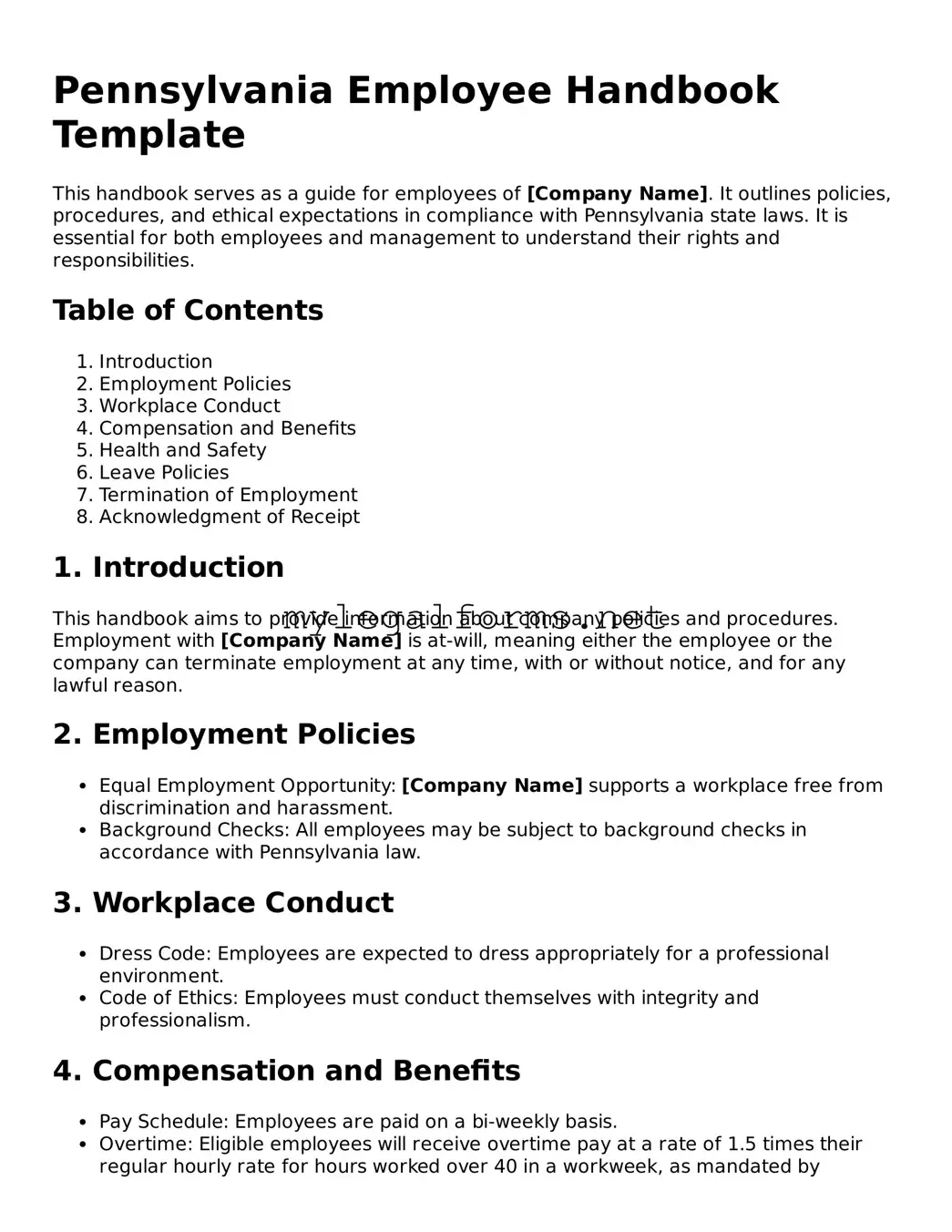Pennsylvania Employee Handbook Template
This handbook serves as a guide for employees of [Company Name]. It outlines policies, procedures, and ethical expectations in compliance with Pennsylvania state laws. It is essential for both employees and management to understand their rights and responsibilities.
Table of Contents
- Introduction
- Employment Policies
- Workplace Conduct
- Compensation and Benefits
- Health and Safety
- Leave Policies
- Termination of Employment
- Acknowledgment of Receipt
1. Introduction
This handbook aims to provide information about company policies and procedures. Employment with [Company Name] is at-will, meaning either the employee or the company can terminate employment at any time, with or without notice, and for any lawful reason.
2. Employment Policies
- Equal Employment Opportunity: [Company Name] supports a workplace free from discrimination and harassment.
- Background Checks: All employees may be subject to background checks in accordance with Pennsylvania law.
3. Workplace Conduct
- Dress Code: Employees are expected to dress appropriately for a professional environment.
- Code of Ethics: Employees must conduct themselves with integrity and professionalism.
4. Compensation and Benefits
- Pay Schedule: Employees are paid on a bi-weekly basis.
- Overtime: Eligible employees will receive overtime pay at a rate of 1.5 times their regular hourly rate for hours worked over 40 in a workweek, as mandated by Pennsylvania law.
5. Health and Safety
[Company Name] is committed to maintaining a safe workplace. Employees should report any unsafe conditions or practices immediately.
6. Leave Policies
- Paid Time Off (PTO): Employees are entitled to [X] days of PTO per year.
- Family Medical Leave: Eligible employees may take up to 12 weeks of unpaid leave for family medical reasons as outlined by the Family and Medical Leave Act (FMLA).
7. Termination of Employment
Employees may leave the company voluntarily or may be terminated for various reasons. The company reserves the right to conduct exit interviews.
8. Acknowledgment of Receipt
All employees must sign an acknowledgment form confirming they have received, read, and understood the policies outlined in this handbook.
For any questions regarding specific policies, employees should reach out to their supervisor or the Human Resources department.
